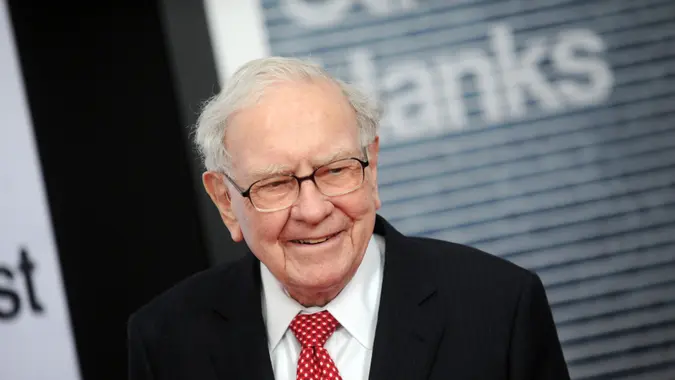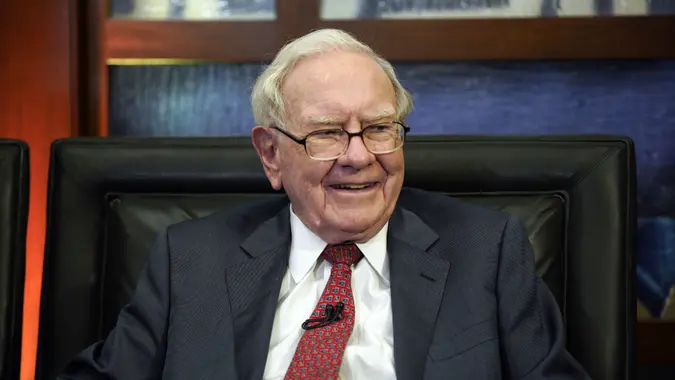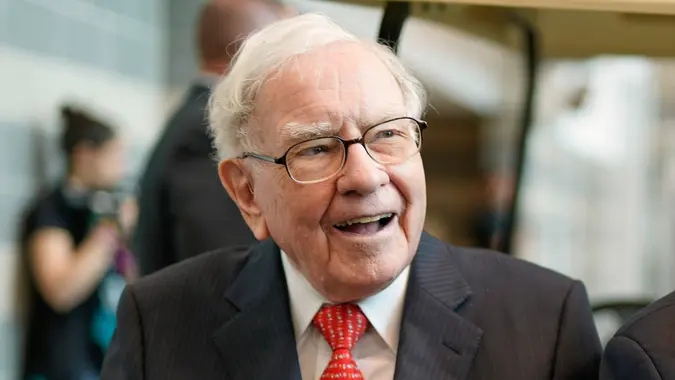How To Become a Stock Market Millionaire: 2 Steps To Take Now

Commitment to Our Readers
GOBankingRates' editorial team is committed to bringing you unbiased reviews and information. We use data-driven methodologies to evaluate financial products and services - our reviews and ratings are not influenced by advertisers. You can read more about our editorial guidelines and our products and services review methodology.

20 Years
Helping You Live Richer

Reviewed
by Experts

Trusted by
Millions of Readers
Accumulating $1 million in assets is the dream of many Americans. But for far too many, becoming an investment millionaire can seem out of reach.
When it’s hard to make ends meet on a monthly basis, it can be difficult to envision socking away enough money to reach a seven-figure nest egg. But the truth is that with some careful planning and consistent investing, reaching that mythical $1 million plateau isn’t all that difficult.
The two primary factors in the equation are how much time you have and which investments you select. Here’s a look at how the formula works.
(Can’t wait? Here’s how to get rich fast in the stock market.)
Picking the Right Investments
All the planning and saving in the world isn’t going to get you to $1 million if you pick losing investments. While you will have to take some risks to reach your goal, they should be prudent.
Some argue that investing in the stock market isn’t “prudent” because it is too volatile. And it’s true, on a short-term basis, the stock market can be nauseating, with even the major indexes capable of falling by 20% on a fairly regular basis. But for the long-term investor, the stock market can be a gold mine.
This is because over time, the stock market’s volatility smoothes out, and the direction it heads is consistently up. No matter how severe a bear market the S&P 500 has undergone, it has always ultimately gone on to make new highs. In fact, something that surprises most investors is that the stock market has never lost money over any 20-year rolling period. This takes a lot of the supposed risk of the stock market out of the equation for long-term investors. Plus, if you’re investing correctly, you’ll be taking advantage of those times the market is down by adding even more money to it.
Add it all up and the stock market’s 10% long-term average annual return and proclivity to move higher make it a solid choice for those looking to reach $1 million in savings.
It’s important to note, however, that while individual stocks can offer even higher returns, trying to pick and choose winners can be difficult, even for professional money managers. That is why many advisors recommend that investors use ETFs that track market indexes, like the S&P 500.
The Power of Compound Returns
Due to the way that compounding works, you won’t get the bulk of your gains until near the end of your investing career, not the beginning. This is one of the reasons that many investors come up short. When your stock market returns over one, three or five years aren’t all that impressive, some investors pull out, not understanding the long-term nature of compounding. Others end up trying to trade the market over the short-term, another strategy that typically comes up short.
Here’s an example to highlight how it works. Imagine that you have a $50,000 investment portfolio and you earn a 10% annual return on it. After 20 years, you’ll have $366,403. But after another 10 years, you’ll have $991,869, or nearly triple that amount. The vast majority of your portfolio value — $625,466 — will have come just in those last 10 years.
How Much You Need To Invest by Age
Nothing brings the power of time and compound interest into clearer focus than looking at a table of how much you need to invest by age. As you can see below, the longer you wait, the more painful it’s going to get in terms of how much you need to sock away. Of course, the later you go in your career, the more likely you are to be earning a larger amount of money. But if you get in the habit of investing small amounts early, you can actually add those pay increases to your investment account and get to your goal faster — or reach for an even higher one.
Here’s a look at how much you’ll need to invest every month at a 10% average annual return if you want to accumulate roughly $1 million by age 65:
- $200 per month at age 25
- $325 per month at age 30
- $525 per month at age 35
- $850 per month at age 40
- $1,500 per month at age 45
Clearly, the earlier you can invest, the easier it will be to reach that lofty $1 million figure.
The Bottom Line: Steps You Should Take Now
You don’t have to be a genius with a supercomputer to generate significant long-term investment gains. If you simply start early and consistently add money to your S&P 500 portfolio, the odds of your long-term success are extremely high.
While the market doesn’t move in a straight line and can be stressful to watch too closely, its historical track record speaks for itself. Going forward, as long as American companies continue to generate profits, they will drag the market upwards along with them. Climb on board as early as you can and enjoy the ride.
 Written by
Written by  Edited by
Edited by 

























